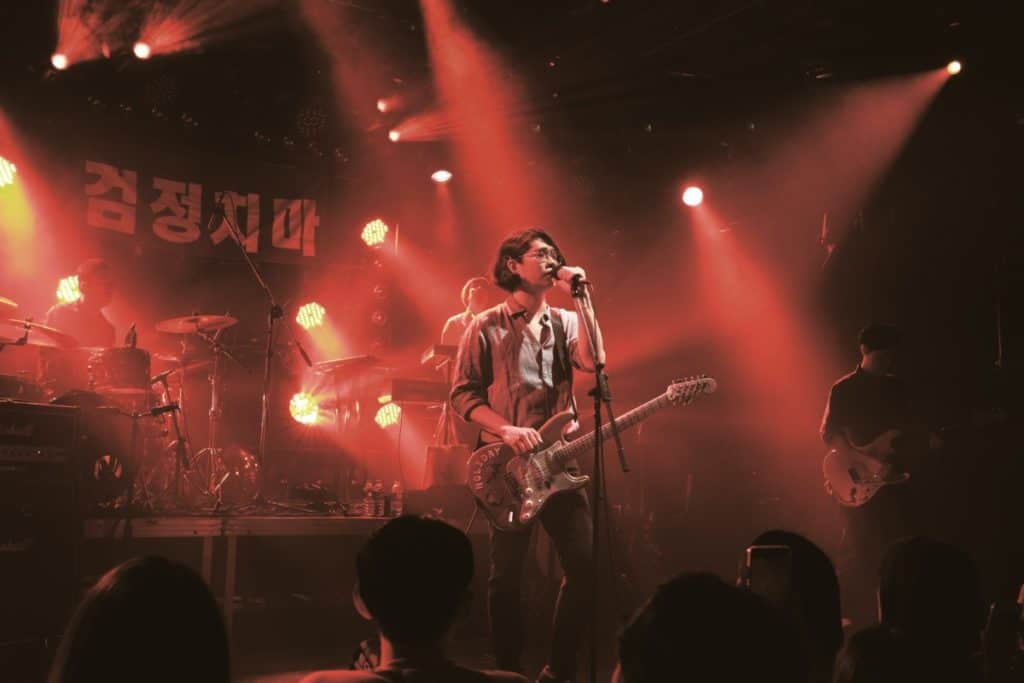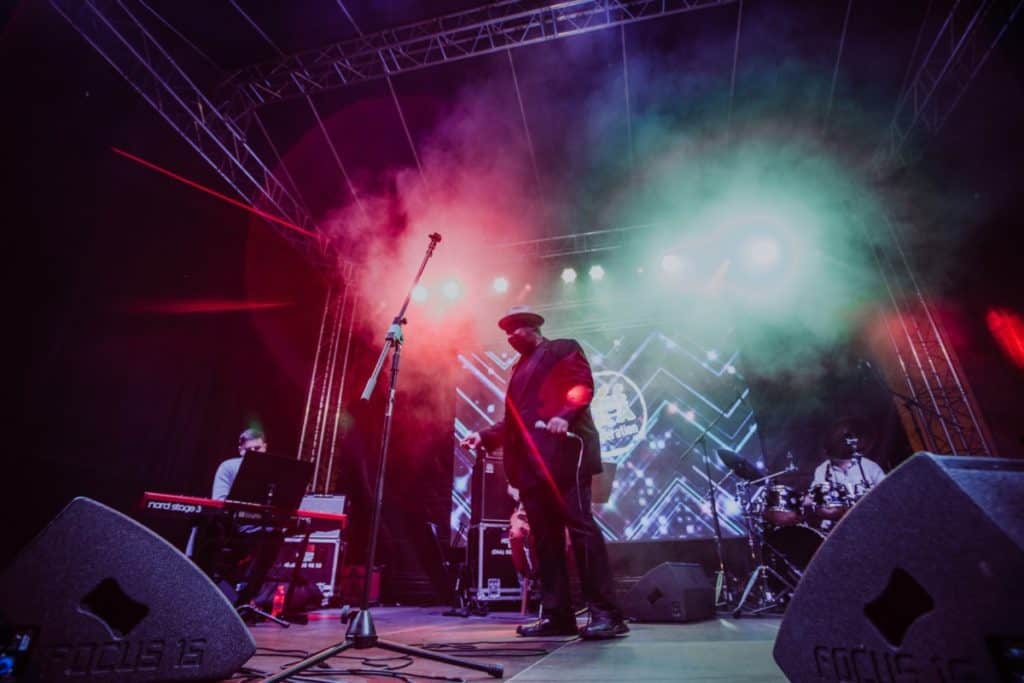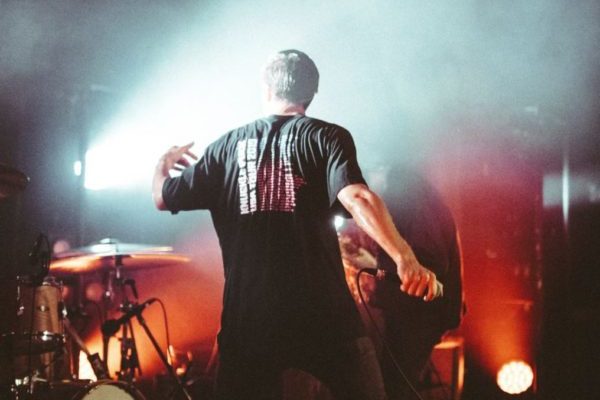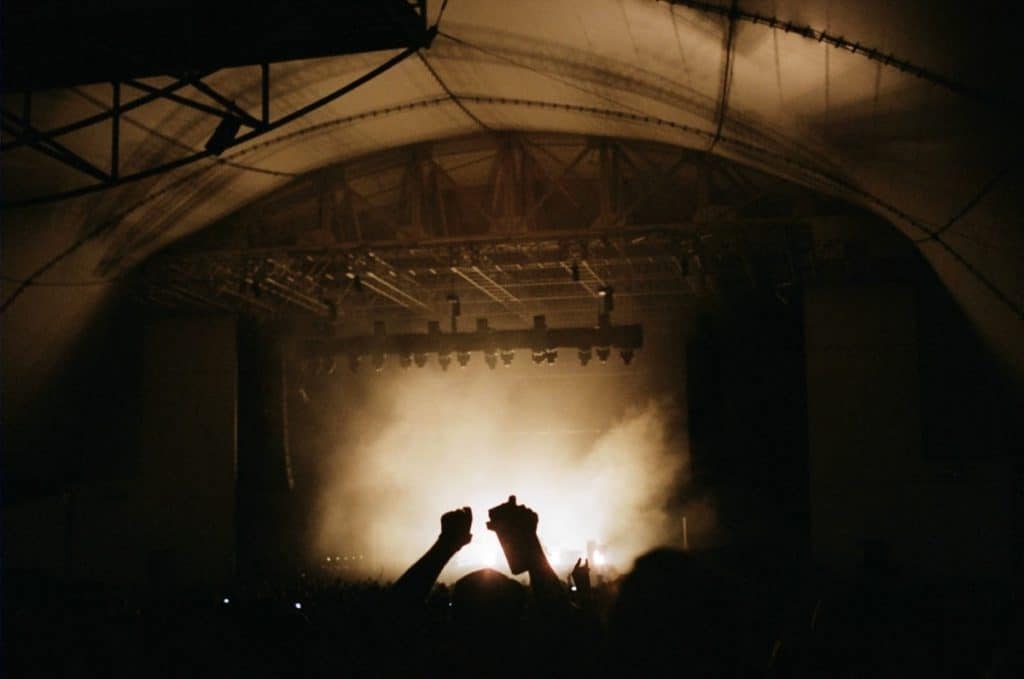
Imagine you’re standing in the front row at a concert. You’re there to see your favorite band — it’s loud, people are packed in tight behind you, the musicians you idolize seem like they’re only inches away, and they’re playing your favorite songs of all time.
But something sounds very different — the songs you’ve memorized by heart, every lyric worshiped like scripture, for some reason are being played faster than the recordings you know so well.
You start to wonder, why do bands play faster live?
In most cases, bands play faster live because it can increase the emotional impact of a concert. Research shows that music with a quick tempo can increase endorphin, dopamine, and adrenaline levels of both the band and the crowd.
Of course, there are always outliers. Some bands speed up the tempo of their performance in order to squeeze a few more songs into their setlist.
Others, unfortunately, play faster live because they want the performance to end, or just because they’re not very consistent musicians.
Whatever the reasoning, there’s no hiding the fact that many musicians deliberately change the tempo of their live performances. Keep reading for more details behind why bands play faster live!
The Emotional Affect Of Live Music

Concerts are meant to be emotional. Millions of people attend concerts every year to experience an escape from their daily routine.
This is because the excitement of live music can cause physiological reactions in the human body.
The average concert-goer’s breathing, heart rate, blood pressure, hormones, physical senses, and chemical levels (like dopamine and adrenaline), are all directly affected by attending a concert.
Those internal reactions are directly influenced by the tempo, volume, tuning, and visual elements of live music.
If a band performs fast and loud, paired with bright and colorful flashes of light, the combination of those stimuli can evoke feelings of elation and euphoria for the audience and the band.
When people dance, crowd surf, stage dive, or join a mosh pit, they’re experiencing those bursts of increased dopamine and adrenaline that can frequently be felt at concerts.
Conversely, acoustic concerts and living room performances usually attempt to slow down and convey more gentle feelings of bliss and tranquility.
Musicians understand that concert-goers want to enjoy the excitement of live music — so speeding up or slowing down a performance can help create a unique experience that can’t simply be reproduced at home.
Instead of performing an exact recreation of what is already available on a band’s records, altering the tempo of certain songs can introduce an element of surprise during a performance.
Alternatively, adjusting the tuning of the instruments, or changing the key of certain songs, can also help a band evoke a deliberate response from the crowd.
Adding More Songs To The Setlist

Although it may not always seem like it, concerts are usually kept to a very specific timeline. In order to ensure that everything runs smoothly during a performance, the show needs to start and end on time.
Check out these articles about tour schedules and how long it takes to set up a stage for a concert.
Many cities have noise ordinances, especially in residential areas. Because of this, concerts are often limited to a pre-determined amount of time where each band can actually be performing.
For example, in the college town where I started Ennui Magazine, there is a venue called The Basement.
Because concerts at The Basement were known to get a little loud, when we would book or play weekend shows, the city only allowed us to start playing music after 6 PM, and everything needed to be silent by 11 PM.
As long as the noise stayed within those restrictions, we didn’t have to accommodate any complaints from the locals.
But if a concert started or ended on either end of those time constraints, we ran the risk of getting a visit from the city police department (and we frequently did).
When a concert is limited to a very specific start and end time, musicians will occasionally speed up their material in order to perform as many songs as possible, while still respecting each band’s individual set times.
Playing Faster Live Can Be A Bad Idea

Even though playing faster live can help bands make their concerts more engaging, there are quite a few downsides to constantly changing the tempo of live performances.
The first and foremost is that many musicians perform using muscle memory, so playing too fast (or even too slow) creates a lot of room for error.
Nobody wants to see their favorite band put on a performance full of mistakes and technical difficulties, but constantly changing tempo makes it very difficult for inexperienced bands to keep time.
Frequently changing tempo also removes the ability for a band to synchronize the music they’re actually playing with a backing track, metronome, or any visual elements like strobe lights or projections.
These types of audio and visual synchronizations are often what makes live music so emotional — touching on multiple of the audience’s physical senses.
However, if a band decides mid-performance to speed things up for a little extra energy, any pre-recorded elements of the show will run off time with the rest of the band and can derail an entire performance.
When I was in college, I played in a band called Lucky Mint. We were a three-piece alternative pop band that utilized multiple electronic elements in our recordings.
Because there were only three of us, we relied heavily on backing tracks to fill the gaps in our live performances. However, that limited our ability to deviate from the tempo of our recordings.
We didn’t have the option to play faster, slower, or change anything about the structure of our songs but it helped keep our live shows incredibly tight.
Understanding when and how to change the tempo of a live performance can be what makes or breaks a live show for many bands.
Wanting The Show To Be Over

Believe it or not, concerts aren’t always just fun and games — especially for the bands that are sometimes legally obligated to perform.
Musicians are people too and they still have bad days. Sometimes musicians get sick, depressed, unmotivated, or just bogged down by the day-to-day requirements of being in a band.
If it’s been a long day, band members may feel tempted to speed up or cut their set short, just because they want to get it over with — but it’s usually pretty obvious when the band just isn’t into it.
Watch this meltdown video of Billy Joe (Green Day) at the iHeart Radio Music Festival. For a guy that’s known to bring kids on stage to play along with the band, I think it’s safe to assume he was having an off day.
It might seem silly, but occasionally a band might hurry through a concert just because the conditions for the show aren’t right — maybe the crowd is too small, or too many kids are on their phones.
Other times it may just be because the band has somewhere else to be, or other obligations to meet.
Unfortunately, the list of reasons why a band may not be interested in playing a show can be somewhat long, but cutting a show short can be extremely disappointing for fans.
In most cases, when a band speeds up the tempo during a show, it’s because they’re trying to make things more exciting for the fans, not less so.
Related Questions
How Do Bands Stay In Time? Primarily, bands stay in time by using a metronome or click track that marks time at a selected rate or tempo. This is delivered to the musicians via in-ear monitors and introduces the possibility for bands to utilize synchronized backing tracks and visual elements. Before in-ear monitors became widely accessible, musicians relied solely on the most rhythmic element of the band to keep time — typically the drums.
Why Do Bands Sound Different Live? In today’s industry, bands sound different when they perform live because modern recordings are altered to eliminate any and all imperfections. When bands actually perform live, the tempo, tunings, equipment, and musical ability of the live band members are usually different from what was available in the recording studio. Interestingly, many bands intentionally change the sound of their live performances from their pre-recorded material in order to provide a unique experience to concert-goers.
Why Do Bands Tune Down A Half Step? Bands tune down a half step because it simplifies multiple aspects of live performances. For vocalists, tuning down a half step can make it easier to reach higher notes without drastically changing the integrity of the song. For guitarists, certain notes can be difficult to play in standard tunings. Adjusting the tuning of a guitar or bass can make it easier to reach those notes as well.
For more industry tips and music marketing insights, check out Ennui Magazine. You can also follow us on Facebook, Twitter, Instagram, Pinterest, and YouTube.
